What Do You Need for a Rotisserie?
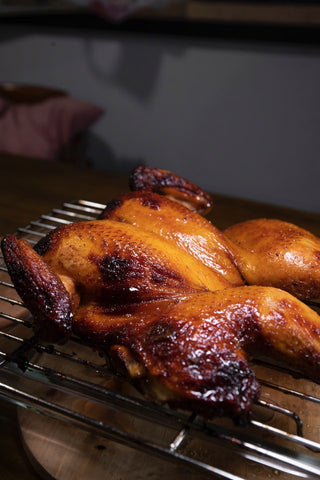
PHOTO BY Amanda Lim / UNSPLASH
Love rotisserie beef roast? Well, rotisserie is famed to have turned many of its admirers into ardent, diehard fans. Grilling meat on a rotisserie is a gratifying sight for hungry tummies. However, with the right meat and tools, making grilled meat on a rotisserie is no big thing. Once you have mastered the skill, all your hard work pays off. The aroma, the flavor, and the taste are simply above all the rest.
What Do You Need for a Rotisserie?
Choice meat and rotisserie tools, to be precise. The famous meat choices include but are not limited to beef, pork, chicken, turkey, and fish.
The rotisserie tool kit may differ based on the grill but a primary one needs:
- Rotisserie attachment (of course!)
- Skewers
- A pair of rotisserie prongs/forks
- Long-handled tongs
- Basting brush
- Heat-resistant hand gloves
- Meat thermometer
- Drip bowl
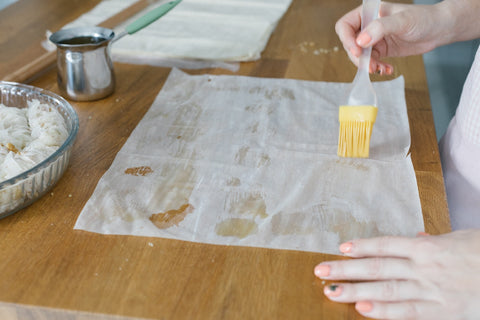
PHOTO BY Meruyert Gonullu / PEXELS
The restaurant served rotisserie is an excellent takeaway food for many of us. Trying your own hand at making a rotisserie may seem a bit intimidating but not undoable. With a few fundamental rotisserie tools and some basic rules, you can make your own rotisserie roasts at home. Learn how to make your own foolproof rotisserie roasts in the comfort of your own home.
Which is the best meat for spit roasting?
This largely depends on your choice of meat.
- Beef
- Pork
- Chicken
- Turkey
- Fish
-
Beef:
Lavishly marbled beef meat does exceptionally well in the rotisserie. Portions of the animal (particularly the hind part) rampant with tissue and muscle do better with braised cooking methods rather than roasting. So, it is better to avoid it.
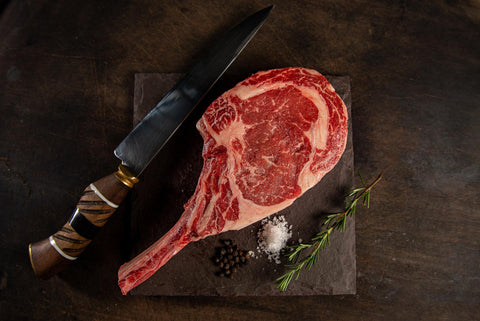
PHOTO BY paulootaviocastro / PEXELS
Imagine all the liquid melting fat melting, drenching, and self-basting your meat as it rotates on the rotisserie. That’s the magic of rotisserie roast cooking!
Bind ribeye or strip loin with a butcher’s/kitchen twine, so it retains its shape while roasting. Truss using a surgical knot first and secure it with a second and final knot to keep the grip in place. Repeat it throughout the length of the meat till your meat is secure. While there are various other methods to tie your meat, this is by far the easiest way to do it (especially for a newbie like me).
Prime rib roast and rotisserie are made for each other. You must roast it once in a rotisserie to know what I am talking about.
-
Pork:
Pork shoulder, loin, belly, and leg are arguably the best cuts for roasting. All the pork fat will turn your roast into a moist, tender pork roast preserving all the juice inside. In addition, slow cooking enhances the breakdown of the protein consistently, resulting in a melt-in-your-mouth experience.
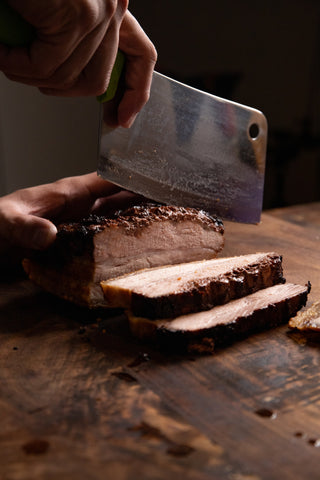
PHOTO BY Amanda Lim / UNSPLASH
What is the secret of crackling your pork roast?
To make the crispiest pork, remove pork from the plastic wrap and let the pork sit in your fridge for 1-2 days on a plate. This will rob the pork of most of its moisture. Next, shallow slit the pork up to the fat layer. Finally, give the pork a good salt rub before popping it on the skewer. This is intended to eliminate all the excess moisture, so the skin can turn crispy soon. Start with high heat cooking first and then switch to medium heat to get the perfect cracklings every single time.
Catch the fat drippings in a drip bowl below. Add the liquid to your gravy, soup, or sauces, making it extra flavorsome.
Poultry options, being a lean choice of meat than beef and pork, are healthier and the most sought after.
-
Chicken:
Addicted to store-bought rotisserie chicken? I will never blame you. We all share the guilt on this one. However, when the moment of truth hits, revealing the true face of store-bought rotisserie chicken, the blow is rather hard. It is difficult to come to terms with the fact that the love of our life is made more enticing and craved for with loads of sugar and salt.
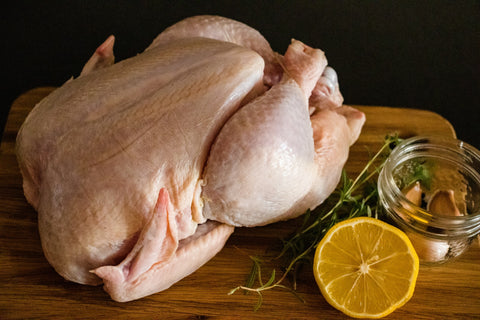
Redeeming us from this habit requires making only one decision. Making our own screamingly delicious rotisserie chickens at home!
When throwing a big party, it is wise to have a rotisserie assembly that can load many birds at a time with no balance issues. Invest in one if you are a party animal or rent it out; it’ll come in handy for a big crowd.
-
Turkey:
What is Thanksgiving dinner without a turkey roast! The holiday dinner and turkey roast have been wedded to each other for a long time.
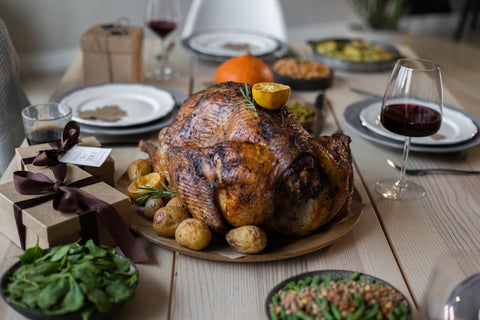
Being larger than chickens, turkeys are heavier. So, make sure your rotisserie can accommodate a whole turkey and can hold and balance the big bird reasonably well.
Once you are adept at roasting your own turkey, you are sure to have a crowd at your Thanksgiving dinner table. And compliments galore!
-
Seafood:
There is always a space for everyone here, even for seafood!
As seafood has less fat content, use butter to coat their outsides before tossing them onto the rotisserie. Then, season and roast your fish and other seafood favorites, placing them in a rotisserie basket.
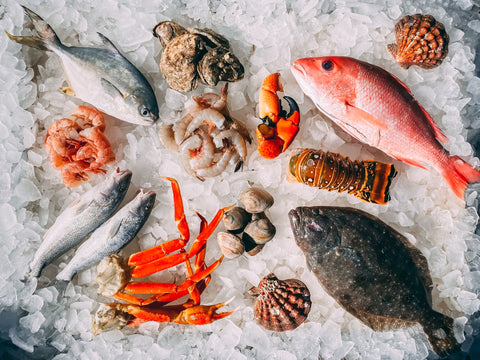
PHOTO BY Mike Bergmann / UNSPLASH
Alternatively, you can skewer the whole fish and spit roast it till done.
What are some essential tips for rotisserie?
- The shape of the meat matters the most. Large, irregular chunks of joint are not fit for rotisserie resulting in overcooking or undercooking. Hence, a proper shape is essential for even cooking.
- Rubbing the seasoning on the meat might not work. Try patting it over it for better adherence instead. Remember that the salt and pepper mixture or any other special seasoning will not permeate the meat’s insides but would rather stay outside only. So, your goal should be to gently pat it over the meat, so it sticks well to the meat’s surface.
- Stop the rotation before inserting your meat thermometer to check the inside temperature.
A word of caution! The rotisserie setup is sizzling hot, and you can easily burn your hands with an unintentional wrong move.
- Add water to the drip tray before placing it below the joint. The fat drippings and the live coal are in close contact and can catch fire by accident.
- Rotisserie works by using indirect heat, so make sure to keep your food at a proper distance to avoid it getting charred.
- If your meat is not well balanced on the spit rod, add a counterbalance weight at the opposite end of the rod to stabilize your meat. The farther it is away from the meat, the heavier it is. So, set it where you would like it to go.
- When you roast cook for a very long time, say in an open fire, baste your BBQ with a meat stock periodically to prevent the meat from drying up.
- If you are using threads to secure your rotisserie meat, make sure to snip and remove the threads before slicing the delicacy.
Can You Add A Rotisserie To BBQ?
Yes, it is possible to add rotisserie to a grill.
An assortment of attachments is available to convert your grill into a rotisserie. Lookup for the model of grill you have and check to see the available options. Narrow down on the one that is a good fit for your grill.
Rotisserie Tool Kit:
1. Skewers
Skewers belong to a world of their own. As versatile as it is, it is made of wood or metal. The types vary according to utility: double-pronged skewers, rotating cage roaster, flat skewers, a single spit rod, and many more.
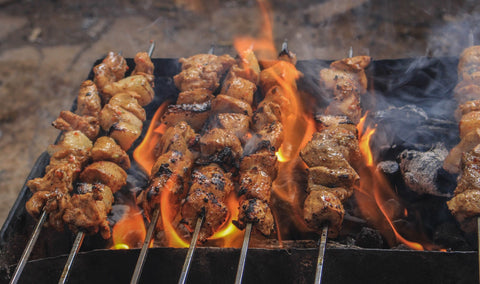
PHOTO BY samer daboul / PEXELS
Double-Pronged Skewers: Buy these if you often make shrimp BBQs and other smaller portions. Skewer in some jalapenos, mushroom, capsicum, onion, meat, and zucchini for a colorful twist.
Rotating Cage Roaster: If you are in a serious affair with BBQing and are adventurous trying out all sorts of meat every now and then, then this is a must-buy. Once you get the setup fixed and going, you are free of the hassle of turning the meat and keeping a watchful eye on the spit roaster.
Spit Rod: There is nothing like a spit rod when roasting a single piece of meat like ribeye or a whole turkey. Use some fork prongs to support the meat and get it rolling.
Why Are Flat Skewers Better?
Though each of the above has its own advantages, choosing a flat skewer rod in every one of them is a wise decision.
When your skewer is round, the weight of the meat can make the pierced hole larger, causing your steak to hang down. You will be struggling in vain to turn your meat to the other side. Even if your meat portion is small, your veggies and meat can face the same fate, resulting in burnt and uncooked sides.
Flat skewers are brilliant when it comes to holding the food in position. And when you need to turn sides, it is a piece of cake.
Flat skewers are great for Seekh kebabs. However, shaping the ground meat over the skewer needs practice and patience.
Try shaping them over the skewer and keep them in the fridge, which helps fix them. Another trick is to try making the ground meat with less moisture; it aids the kebabs to stay on the skewer better.
The best design of a skewer handle is a looped one, as the twist doesn’t allow the heat to radiate out of the skewer. Also, it is a clever way of keeping dripping juices from reaching the handle. To top it off, the loop helps to better maneuver the skewer.
2. Grill Tongs:
These super handy tools can efficiently function where your hands can’t and can effortlessly flip the skewers on your grill grates. Crafted to be longer than the kitchen tongs, they can be operated from a safe distance. So, be sure to get a pair of tongs before getting your BBQ pit fire going.

PHOTO BY Jelleke Vanooteghem / UNSPLASH
3. Rotisserie Forks:
This pair is an essential addition to the rotisserie spit rod assembly feature. Though sticking raw meat into the spit rod can be challenging, the meat is likely to give way to the weight and fall off into the fire when the fat melts. What a waste!
These forks come to our rescue by firmly attaching the meat and keeping it in position, allowing no food mishaps.
4. Meat Thermometer:
To check the doneness of your meat without too much fuss, insert a meat thermometer to read the internal temperature. This is best done about 10 minutes before your grill goes off. The pointed end of the thermometer helps you drive the gadget right into the meat’s heart.

When cooking bone-in cuts, make sure you don’t insert your device near the bone (for the temp is higher at the bone) but instead at the meatier portion of the cut.
There are wired ones, traditional ones, and unwired ones. So, be sure to check out the wide range available and select one compatible with your grill setup.
5. Food Pusher:
Some skewers come with integrated food pushers. But why bother about fancy equipment like these, which add extra weight to the rotisserie setup when all you need is a pair of tongs, a fork, or a knife to push the grilled meat out. No frills!
6. Heat-Resistant Gloves:
Making roasts on a rotisserie is fun and frolic, easily hampered by a mishap. You must remember that you are dealing with a hot grill setup and safeguard all your points of contact with the rotisserie. Your hands are the most vulnerable parts. So, once the heat is on, remember to put your gloves on, even if it means you will use tongs or other safety tools for food handling as a precautionary measure.

7. Shredder Claws:
Do you follow the traditional method of shredding meat using a fork? What a bother! Time to switch over to the shredder claws. These claws are specially designed to do the same job in considerably less time and effort.
So, whether you are making pulled pork or shredding chicken meat, you can rely on meat claws to get your job done in no time. Designed to be worn with a clenched fist, they are super sharp and shreds your meat perfectly.
Shredder claws are used for shredding cooked meat, so forget it if you are thinking of pulling apart raw meat; it is a big no-no.
How To Use Shredder Claws?
Grilled or roasted meat tends to be a bit slippery. So, exercise a bit of caution before starting the shredding process. A sane thing to do is to try holding the meat with the claws of one hand and shredding it with the other.

